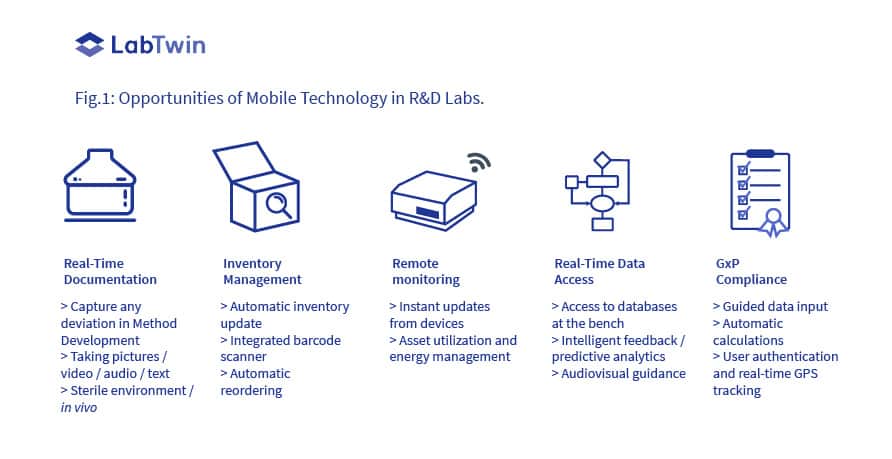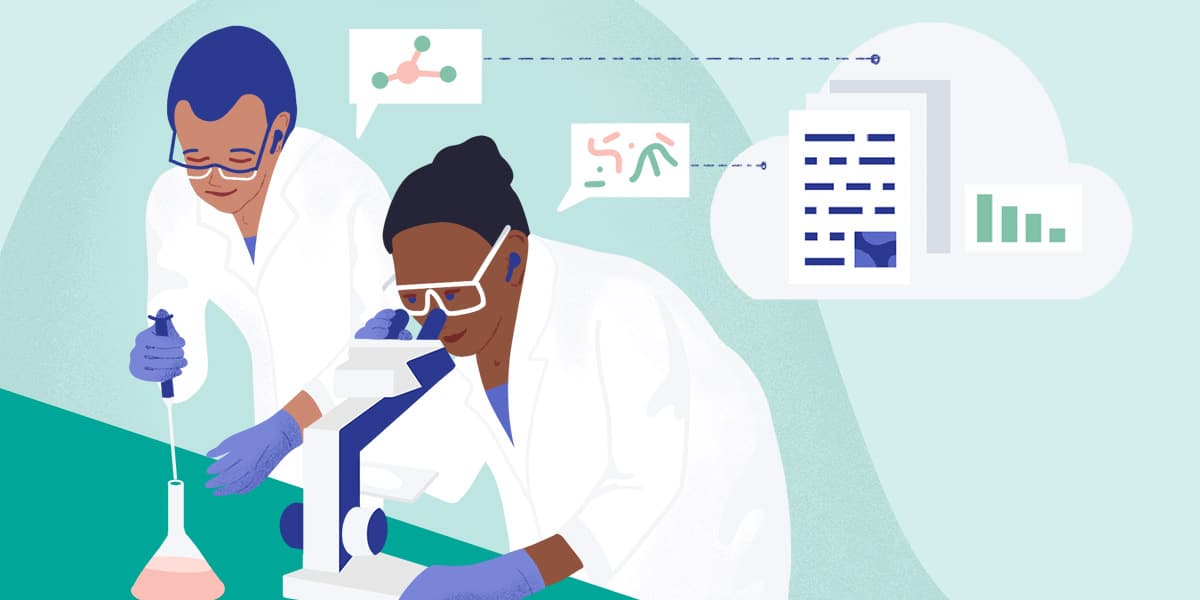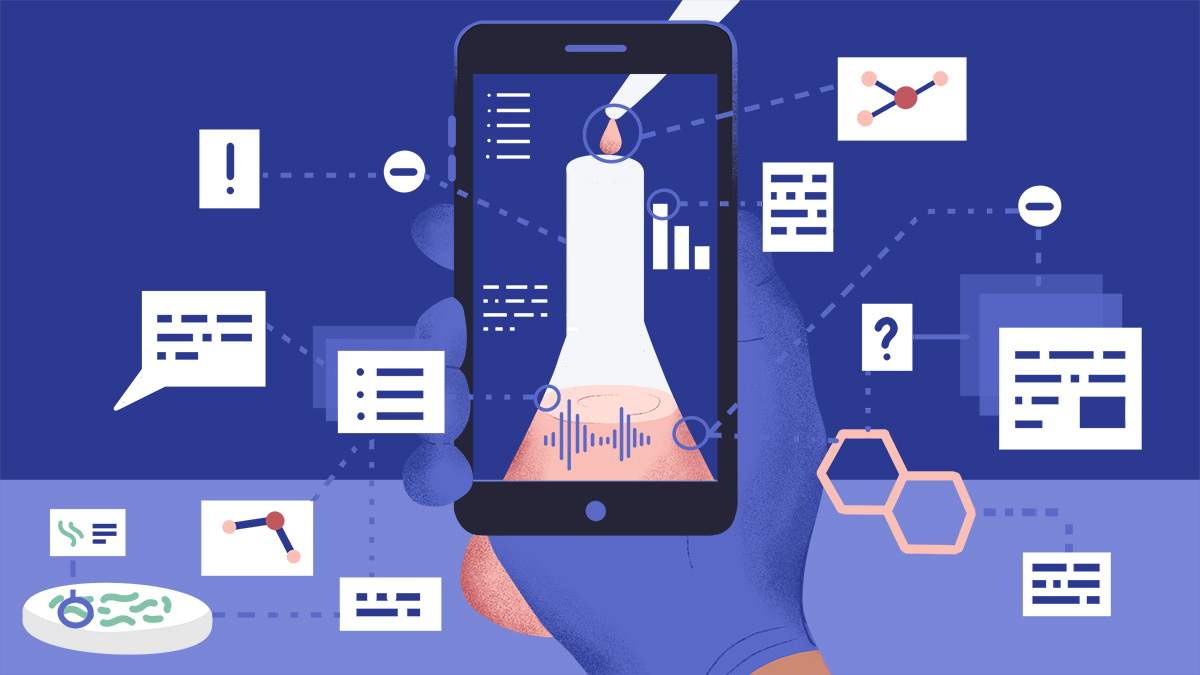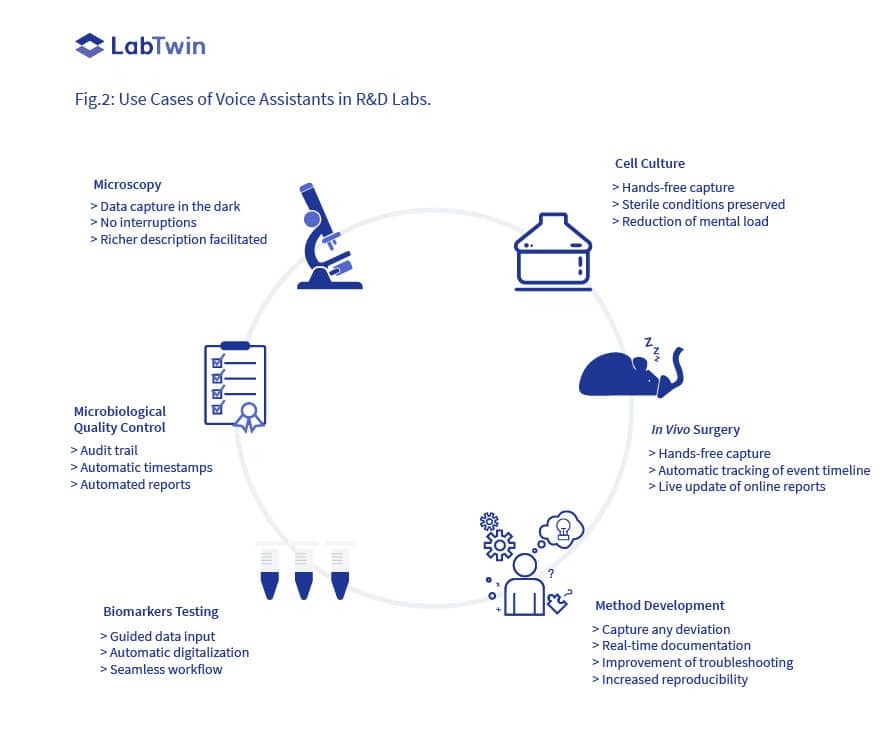The COVID-19 pandemic has highlighted the importance of pharmaceutical R&D. Billions of people around the world are pinning their hopes on a new COVID-19 vaccine to end the exponential infections, death rates and social restrictions. The pharmaceutical industry has risen to the occasion and 9 months into the outbreak, 7 vaccines are in Phase III clinical trials.
Unfortunately, it is highly likely that we will see similar health crises in the future. To cope with these, the pharmaceutical Lab of the Future must be agile, with the ability to rapidly implement or scale up new research programs.
Mobile, voice and cloud technologies give pharma companies the capacity to streamline processes, lower error rates, reduce costs and speed up research timelines.
Scientists spend up to 80% of their time at the bench with no reliable way to capture and access information in real-time.
Mobile technology in Pharma R&D
In Pharma R&D experiments are complicated, often involving many different lab instruments and sterile or clean environments where lab workers must wear personal protective equipment, including gloves. Static technologies such as paper, electronic lab notebooks (ELNs) or laboratory information management systems (LIMS) make it difficult for scientists to collect data while moving through the lab to conduct experiments. When using static technologies, researchers must stop work and remove gloves to note down experimental conditions and results.

Collect more comprehensive data in Pharma R&D
Mobile technologies solve this problem by connecting scientists with their lab instruments and data. With mobile tech, such as a digital lab assistant, researchers can record data and access information, in real time, while they move around and work. This results in more comprehensive datasets that make it easy to pinpoint the root cause of errors or deviations.
“You need to be able to capture insights and new ideas, and implement them, in real time. If a researcher can walk around the lab with a device that records every aspect of an experiment as well as all modifications – that is incredibly exciting.” Margaret Porter Scott - VP and Biochemical and Cellular Pharmacology, Genentech
Improve productivity in Pharma R&D
Mobile technologies also improve productivity because researchers can continue to work, and record data, at the same time. This eliminates distractions such as having to go back into the office to look up a buffer concentration.
With mobile technologies, researchers are less likely to miss small details that could affect the reproducibility of their experiments.
“Sometimes scientists are not as productive as they could be as a result of their documentation workflow. They’ve missed something in the lab and only realized later that it was scientifically relevant. They then have to go back and repeat the experiment to record the missing details,” says Egerton.
“Research shows that it takes the human brain 30 minutes to get back into the flow of working. Therefore, it’s very difficult for scientists to concentrate on their work when they are dealing with constant interruptions – timers going off, needing to go and look up something on their LIMs, etc.” John Egerton - Head of Sales, LabTwin
Voice Tech in Pharma R&D
Mobile technologies become exponentially more powerful when combined with voice technologies.
Hands-free data management
Voice-activated interfaces allow researchers to key their hands and eyes focused on experiments, and use their voice to access information or record data. Voice-powered digital lab assistants can also connect with lab instruments to automatically collect and digitize experimental data and metadata. Scientists can label and sort all data according to experiment, simply by speaking to a digital assistant. This makes it easy to run multiple experiments without getting confused or losing valuable data.
Scientists can also use voice-activated tools to set timers and reminders during experiments, update lab documentation such as standard operating procedures (SOPs) and manage supply ordering.
“Day-to-day lab work has changed dramatically over the last 10 years. Especially the quantity, diversity and velocity of data generation. The one missing piece is the tools to manage data, handle protocols and collaborate. We need new tools like LabTwin to bring together unstructured data, metadata surrounding protocols and the structured data produced in the lab,” says Alok Tayi, VP, Life Sciences at Egnyte.
“Life science instruments output data in many different formats. What about connecting those instruments by digital technology so scientists at the bench can see what is happening in the lab? The system could present entire workflows with a single voice command. Or scientists could tell the system where and how to process data.”
Oscar Kox
CEO and Founder, iVention
Improve compliance
LabTwin’s voice-powered digital assistant can read out SOPs to scientists and record when each step is completed with automatic time and date stamps. This feature minimizes distractions and improves protocol adherence. User identification and electronic signatures help provide a complete audit trail.
“Protocol adherence often comes up during investigations as root causes for an out-of-specification result. Operators can’t always remember multiple experimental protocol steps for several hours and then write them down accurately after the fact.”
Sofía Lange
Head of Quality Assurance, Atrium Innovations
Cloud Technology in Pharma R&D
With the convergence of big data, advanced analytics and lab automation, pharma companies are starting to create more nimble, collaborative and patient-centric processes. Cloud technology is a key part of streamlining preclinical and clinical research, reducing costs and processing huge amounts of data in research and development (R&D).
Cloud technology facilitates data collection, harmonization and sharing across multinational organizations and collaborative projects.

Automate data harmonization
Pharma companies can use the cloud, along with mobile and voice technologies, to automate data collection and structuring across the entire organization so that data is no longer siloed, lost or forgotten. Longitudinal datasets, therefore, become more valuable.
A digital lab assistant connected to the cloud can automatically collect metadata such as lab ambient temperature and humidity measurements to enrich experimental data and facilitate troubleshooting.
“Data is very siloed in many organizations, with diverse labelling and structuring,” says William Whitford, Strategic Solutions Leader at Cytiva. “Data may be generated in various facilities using different instrumentation, and sometimes different languages. The goal is to harmonize all these data with a systematic and universal approach.”
“Creating data is very expensive in pharma research, because unlike other industries, somebody has to do actual work to create data. Therefore, you should try and generate and capture every data point you can. The cloud helps with this.”
Nicolas Bernsmeier
Digital Lead Pharma Research, Bayer
Share data and ensure data security
Collaborations help drive innovation but sharing data may compromise data security particularly with regards to data privacy regulations. By using the cloud, companies can ensure they abide by regulatory guidelines on data privacy and security, even when sharing data.
“The cloud is an interoperable, global system made for change. It helps balance between data accessibility and compliance,” says Jonas Kulessa, Head of Engineering at LabTwin. “You can use the cloud to standardize your data security and have one single point for all security events – who accessed what and when etc. It’s a game changer.”
“Data sharing and access management is much easier in the cloud than in the closed environment of a data center. The cloud’s large computing power can scale up and bring algorithms to the data – you can’t do that with other system.”
Nicolas Bernsmeier
Digital Lead Pharma Research, Bayer
Conclusion
Pharmaceutical products improve the health and quality of life of billions of people around the world. With pandemics such as COVID-19, there is increased pressure on pharma companies to accelerate research timelines and bring new products to market as soon as possible.
New technologies, including mobile, voice and cloud technologies, will help power the Lab of the Future. These technologies integrate and automate data management, improve data security, facilitate data sharing and lower error rates. The flow on effect of these benefits is reduced research costs and faster product development.
Contact us to learn how LabTwin’s voice-powered digital lab assistant can help you improve productivity and accelerate R&D.




